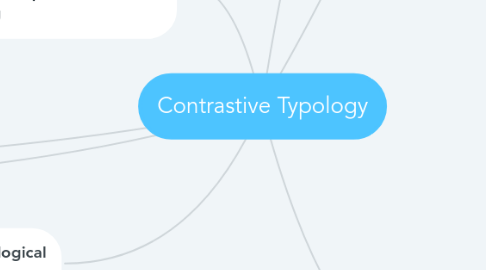
1. 2) to draw from these common or divergent features respectively the isomorphic regularities (закономірності) and the allomorphic singularities (відмінності) in the languages contrasted;
2. 3) to establish on the basis of the obtained isomorphic features the typical language structures and the types of languages;
3. aims at establishing the most general structural types of languages on the basis of their dominant or common phonetical/phonetic, morphological, lexical and syntactic features
4. represents a linguistic subject of typology based on the method of comparison or contrasting
5. Contrastive typological investigations
5.1. 1) to identify and classify accordingly the main isomorphic and allomorphic features characteristic of languages under investigation;
5.2. 4) to perform on the basis of the obtained practical data a truly scientific classification of the existing languages of the world;
5.3. 5) to establish on this basis the universal features/phenomena, which pertain to each single language of the world.
6. may equally treat dominant or common features only, as well as divergent features/ phenomena only, which are found both in languages of the same structural type (synthetic, analytical, agglutinative, etc.) as well as in languages of different structural types (synthetic and analytical, agglutinative and incorporative, etc.)
7. Branches of typological (or Contrastive typological) investigation
7.1. 1. Universal typology
7.1.1. investigates all languages of the world and aims at singling out in them such features/phenomena which are common in all languages
7.2. 2. Special or charactereological typology
7.2.1. investigates concrete languages, one of which is, as a rule, the native tongue
7.2.2. investigates the frequency of language units in speech, the regularities and particularities of their use with the aim of expressing different meanings
7.3. 3. General typology
7.3.1. has for its object of investigation the most general phonetic, morphological, lexical, syntactic or stylistic features
7.4. 4. Partial typology
7.4.1. investigates a restricted number of language features/phenomena; for example, the system of vowels/consonants, the means of word-formation or the syntactic level units.
7.5. 5. Areal typology
7.5.1. investigates common and divergent features in languages of a particular geographical area with respect to their mutual influence of one language upon the other.
7.6. 6. Structural typology
7.7. 7. Functional typology
7.7.1. has for its object the means of grammatical expression, the order of constituent parts at the level of words, wordcombinations and sentences
7.8. 8. Content typology
7.8.1. investigates the types of possible meanings expressed by various language units and their forms in the contrasted languages
7.9. 9. Qualitative typology
7.9.1. investigating predominant features (phonetic, morphological, syntactic) in the contrasted languages and characterising them according to the predominance of some of these qualities
7.10. 10. Quantitative typology
7.10.1. investigates the quantitative correlation of some features and phenomena and their identifying (dominant) role in the contrasted languages
7.11. 11. Semasiological typology
7.11.1. investigates the ways of expressing meaning (the inner content) of language units in the contrasted languages
7.12. 12. Onomasiological typology
7.12.1. is a part of semasiological typology. Its object of investigation is isomorphic and allomorphic ways of giving family names and nicknames to people in different contrasted languages
